The Kiss of Life, 1967

"The Kiss of Life," as we see here, is a dramatic and iconic photo taken in 1967. It captures a breathless moment of heroism high above the ground on a power pole. The image shows JD Thompson administering mouth-to-mouth resuscitation to his colleague, Randall G. Champion, who had become unconscious after accidentally contacting a low-voltage line.
Suspended upside down and strapped to the pole, Randall's life hung in balance until JD's quick thinking and brave action revived him. This extraordinary photo won the 1968 Pulitzer Prize for Spot News Photography and became a symbol of the photographer Rocco Morabito's high-end portfolio.
Pablo Picasso, 1958
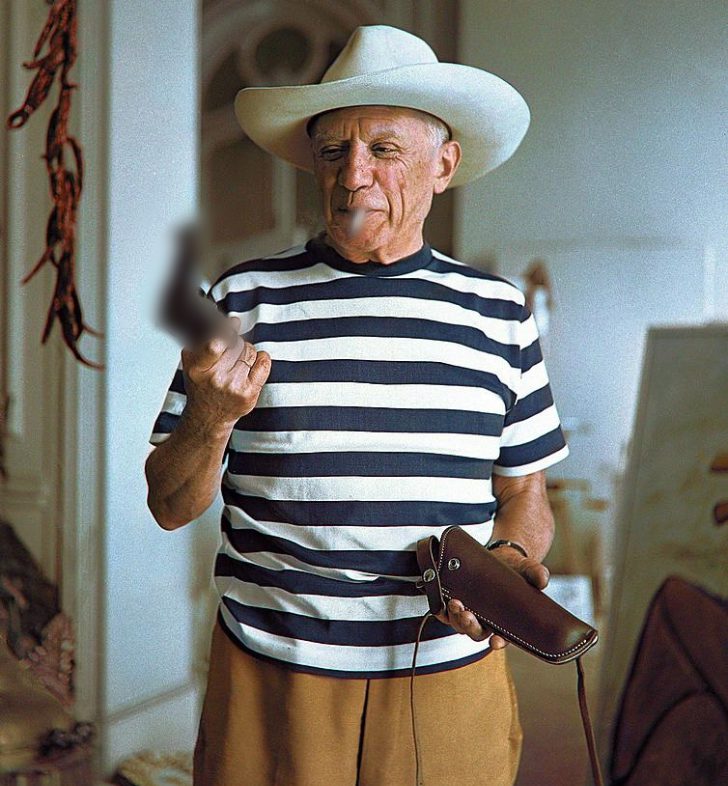
A 1958 photo captures Pablo Picasso in a rare, relaxed moment, his smile reflecting the less publicized, lighter side of a man whose artworks revolutionized the 20th century. He is a prolific innovator, co-founded Cubism, and astonished the world with masterpieces like "Les Demoiselles d'Avignon" and "Guernica," a powerful anti-war statement.
Beyond his well-known Blue and Rose Periods, Pablo delved into sculpture, ceramics, and stage design, showcasing his versatility. Surprisingly, he also had a lesser-known poetic side, writing over 300 poems and two plays. His profound impact on art persists, making him a continuous subject of study and admiration in the art world.
Ruby Bridge began school at Frantz Elementary School, 1960
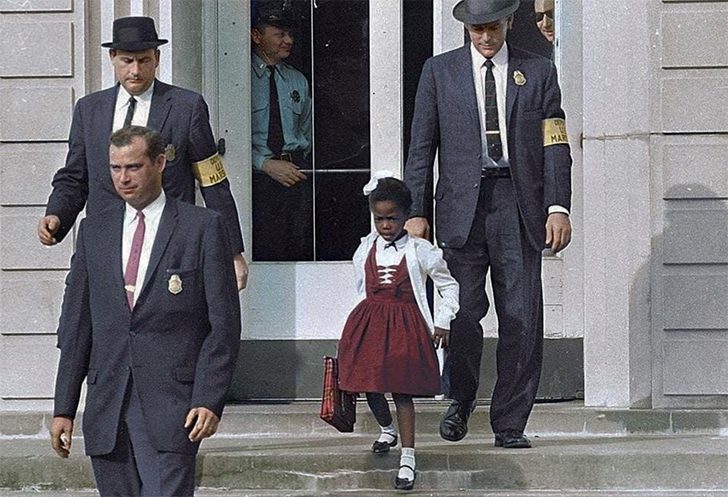
The old photo of Ruby Bridges, a brave six-year-old African American girl, escorted by U.S. Marshals into New Orleans' William Frantz Elementary School, is a powerful symbol of desegregation in the United States. On November 14, 1960, she became the first African American child to integrate into the school, a significant act following the 1954 Brown v. Board of Education decision that declared racial segregation unconstitutional.
Despite passing a challenging aptitude test alongside five other children, Ruby was the only one to attend Frantz Elementary that day. She encountered a hostile mob hurling insults and objects, and only one teacher, Barbara Henry, agreed to teach her.
Two brothers meet again, 1963
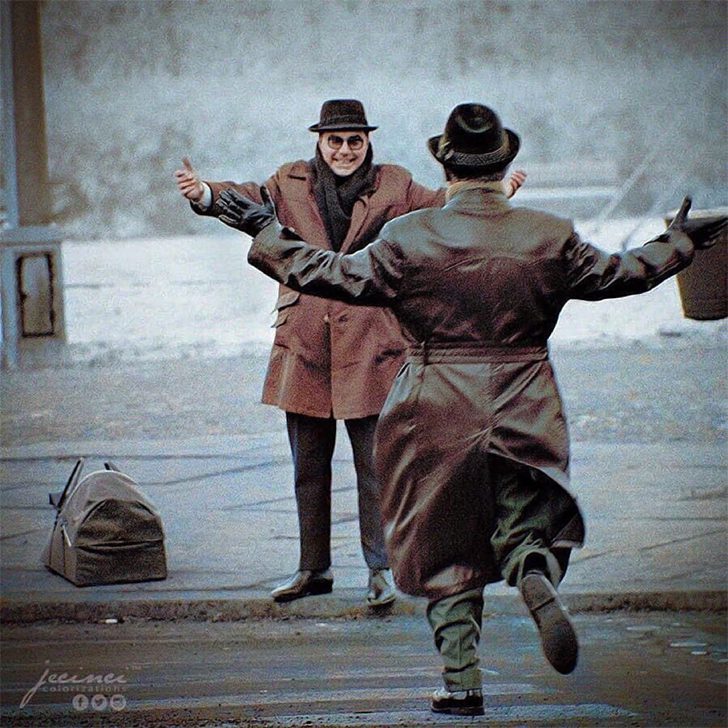
The Berlin Wall, erected in 1961, starkly divided Germany into East and West, echoing the Cold War's deep ideological rifts. This concrete barrier was primarily built to stop East Germans from fleeing to the West, trapping families and friends on opposite sides. For 28 months, personal contact across the divide was nearly impossible, severing countless connections.
However, a glimmer of hope emerged in 1963 with the "passport agreement," allowing some movement between the two Germanys for the first time since the Wall's construction. A touching photo from this year captures the reunion of two brothers, their faces reflecting the profound relief and joy of reconnection after years of enforced separation.
Japanese-Americans during their move to an internment camp, 1942
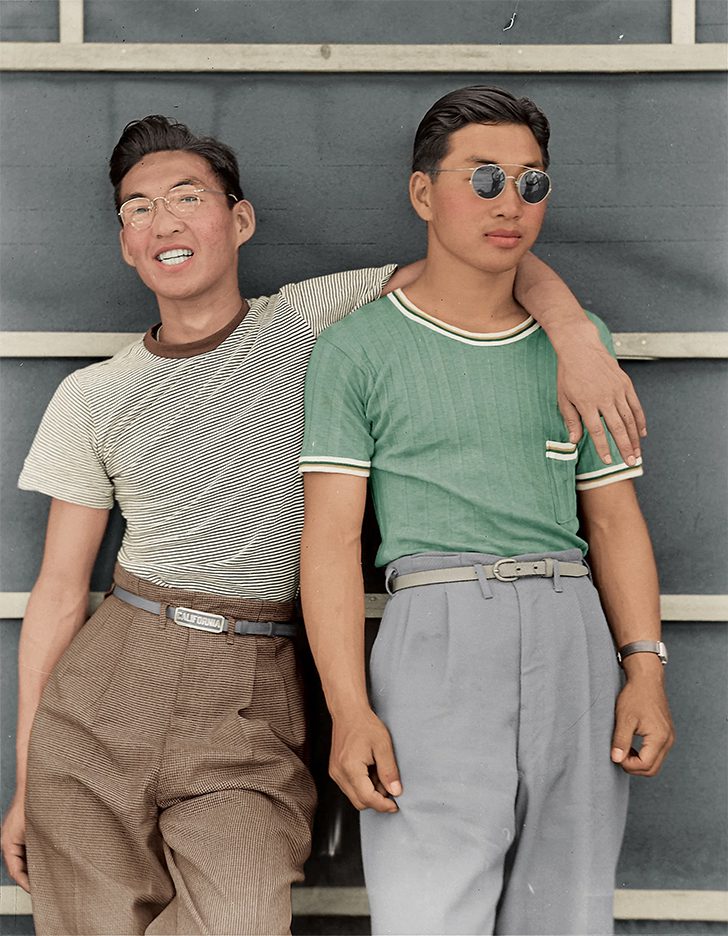
The surprise attack by Japan on Pearl Harbor on December 7, 1941, drastically changed the lives of many Americans, particularly those of Japanese descent. In the fearful aftermath, pervasive racism and long-standing immigration biases clouded judgments, leading to severe measures against Japanese-Americans.
In February 1942, President Franklin D. Roosevelt signed Executive Order 9066, which authorized the internment of over 110,000 Japanese-Americans living on the West Coast. This decision, fueled by unfounded security concerns, resulted in thousands being uprooted and confined in camps. In Hawaii, despite its proximity to the attack, fewer than 1,800 of the sizable Japanese-American population were interned.
The Tallest, Shortest, and Fattest Men in Europe, 1913
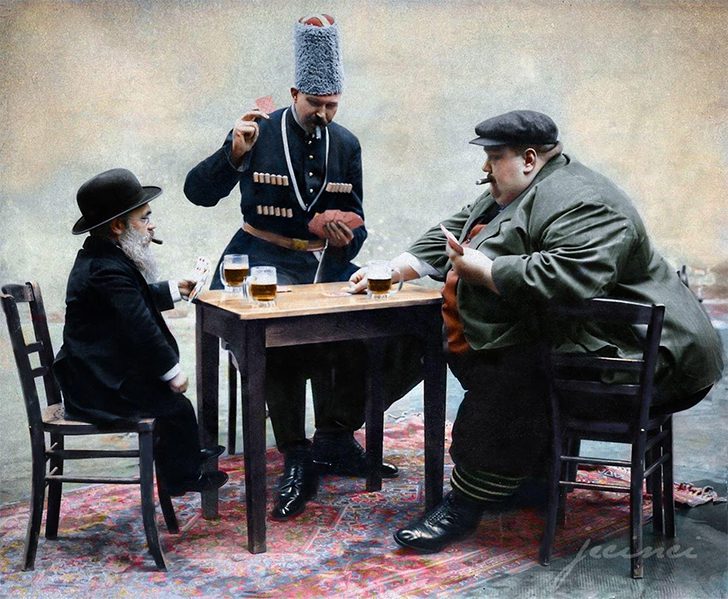
This snapshot from 1913 shows us that Europe's extremes converge over a game of cards. Towering above his companions is Cornelius Bruns, recognized as the continent's tallest man. As he confidently prepares to place his card, his opposite sits across, a diminutive figure lost to history. Meanwhile, the scene's centerpiece is Cannon Colossus, aptly named for his colossal size.
Cannon's immense girth necessitates a unique seating arrangement: he balances precariously on two chairs. Beyond their physical disparities, these men share an unlikely camaraderie, united by a shared passion for cards. Their meeting offers a fascinating glimpse into a bygone era, where individuals of all shapes and sizes came together.
Thomas Griffith Taylor and Charles Wright in Antarctica, 1911
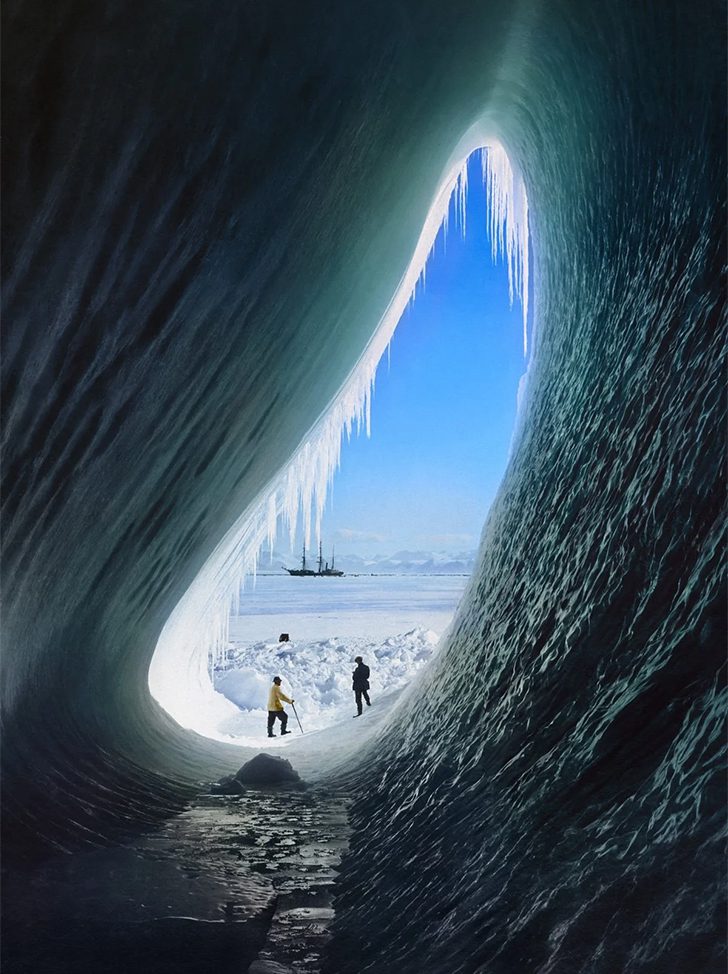
On a chilling adventure to the Antarctic, the Terra Nova expedition, led by Robert Falcon Scott, aimed to conquer the South Pole in 1912. In a race against Norwegian explorer Roald Amundsen, Robert's team faced harsh conditions and fierce competition. They finally reached their destination on January 18, 1912, discovering Roald's victory weeks earlier. Tragically, Scott and his companions perished on the return journey.
Our photograph right here includes geologist Thomas G. Taylor and meteorologist Charles Wright, who are dedicated to their research amidst the icy expanse. Behind them looms the Terra Nova, the vessel that carried them into history.
Vivien Leigh as Scarlett O'Hara, Undisclosed
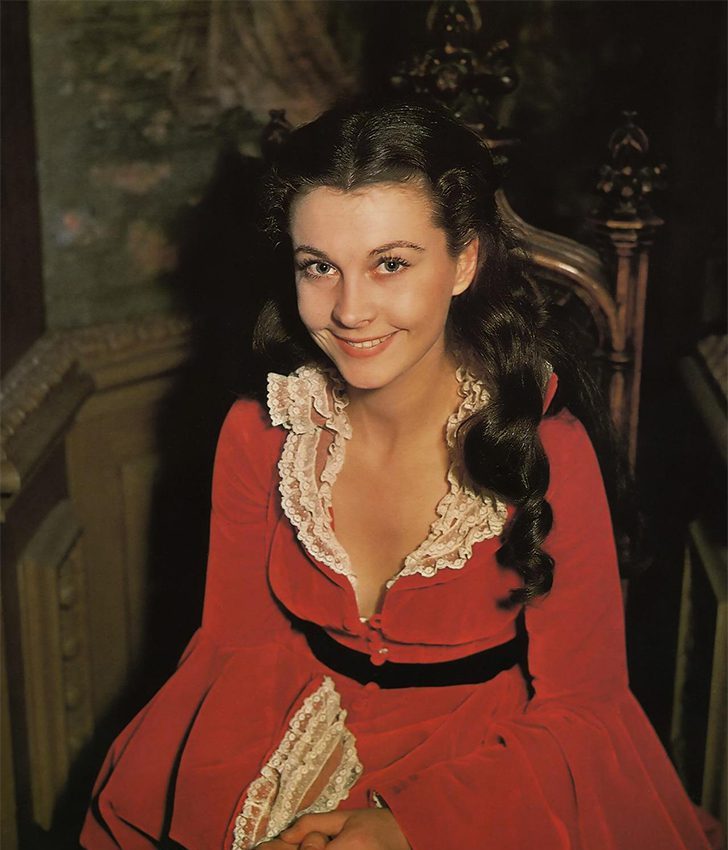
In this sneak peek, Vivien Leigh embodies Scarlett O'Hara, the fiery protagonist of "Gone with the Wind," a role that defined her career. This 1939 epic film, based on Margaret Mitchell's novel, is renowned for its sweeping narrative of the American South during the Civil War and Reconstruction era.
Vivien's portrayal required a deep immersion into the character, including extensive speaking lessons to perfect a Southern accent, alongside ballet and singing classes to enhance her poise and vocal presence. Her commitment paid off spectacularly when she won the Academy Award for Best Actress. Her transformation into Scarlett remains a celebrated feat in cinematic history!
Unpacking Mona Lisa at the End of World War II, 1945
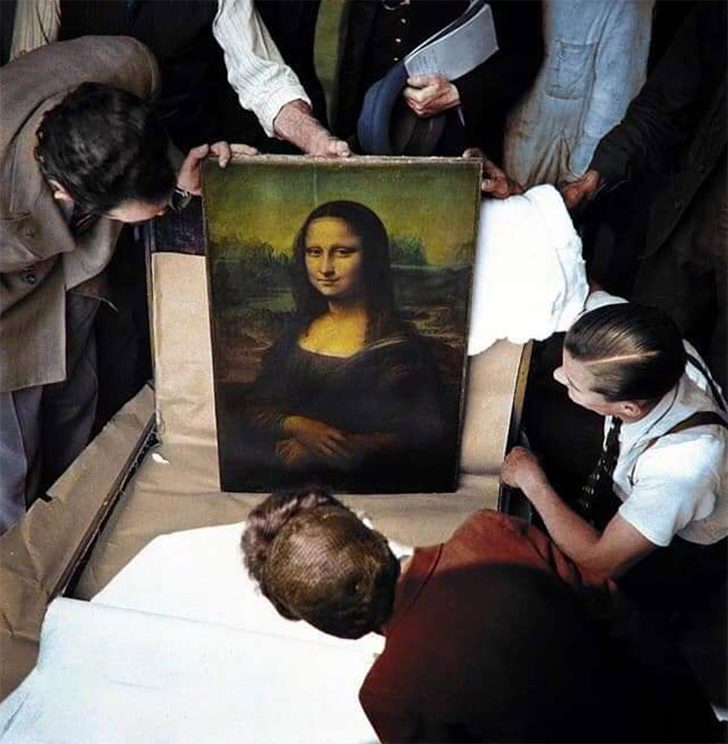
In mid-1945, an old photo captured a pivotal moment—the return of the "Mona Lisa" to the Louvre Museum after the harrows of World War II. Before the war, in a meticulous effort to protect its cultural heritage, France evacuated Leonardo da Vinci's enigmatic painting and other precious artworks from the Louvre, hiding them in secret locations far from potential battle zones.
This iconic artwork was housed in various nondescript outposts to evade Nazi appropriation, and its comeback showcased the resilience of art amidst chaos. This triumphant return of this masterpiece marked a new chapter of peace and renewal for France's cherished treasures.
Elizabeth Taylor on the set of Giants, 1956

This evocative old photo captures the indomitable Elizabeth Taylor on the 1956 set of "Giant," a film that not only showcased her talent but also mirrored America's societal shifts. On location in the arid landscapes of Marfa, Texas, Elizabeth stood out with her striking beauty and formidable presence, epitomizing Hollywood glamour amid the dusty backdrop.
The film, famous for tackling issues of wealth, class, and racism, was a pivotal moment in her career. Off-screen, her life was as dramatic as her roles, marked by passionate activism and multiple high-profile marriages. "Giant" remains a landmark in her career, earning her critical acclaim and solidifying her status as a film icon.
Carl Akeley and the Leopard, 1896
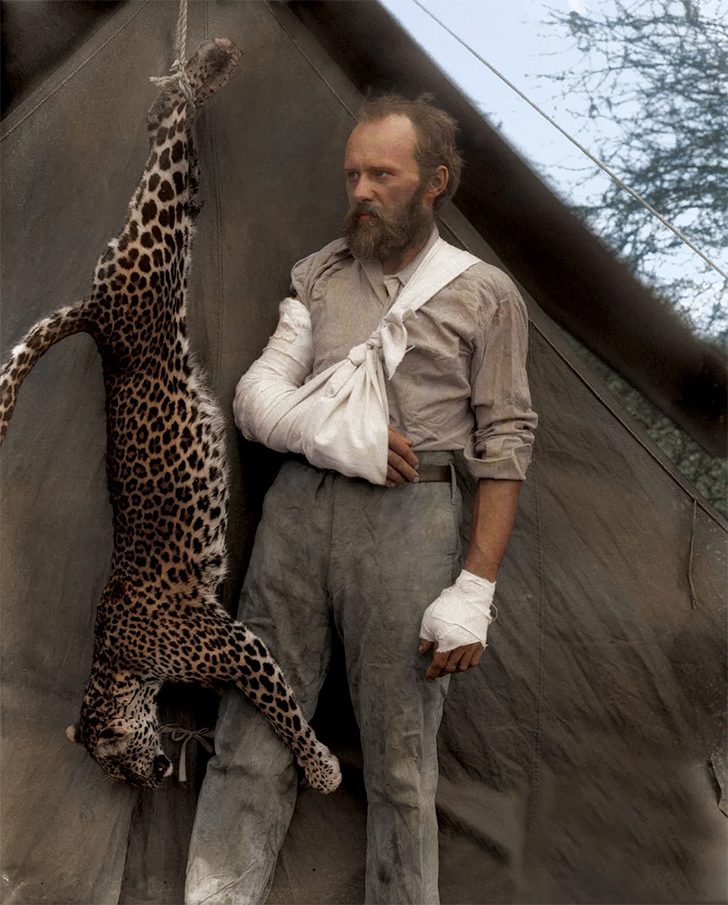
This old snap of Carl Akeley stands as one of the most astounding tales in the annals of natural history. Captured in 1896, it shows the famed taxidermist with his hands bandaged, evidence of his harrowing encounter with a leopard, which he is said to have killed with his bare hands.
This remarkable moment occurred during an expedition in Somalia, highlighting Carl's grit and determination. Known as the father of modern taxidermy, he revolutionized the field by creating more lifelike and dynamic displays. His commitment extended beyond preservation to conservation, helping to establish Africa's first national park, Virunga, in 1925, safeguarding the very wildlife he once hunted.
Albert Einstein and Charlie Chaplin, 1931
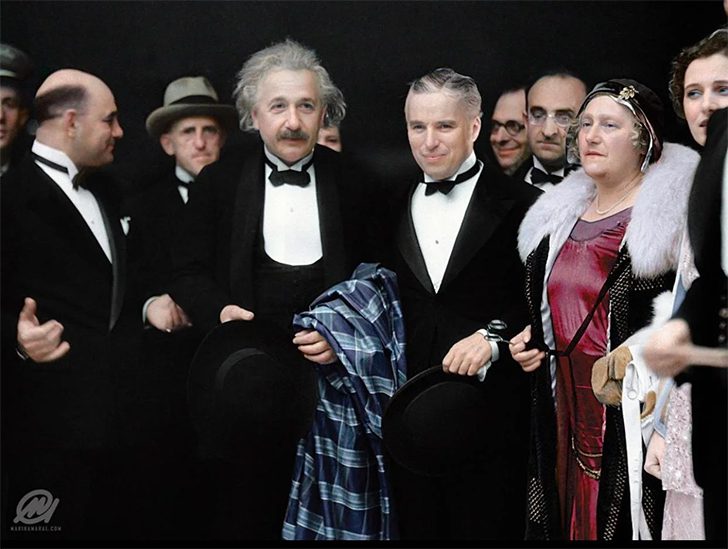
Albert Einstein, the mastermind behind the theory of relativity, and Charlie Chaplin, cinema's first global icon, are captured together in a moment that bridges the realms of science and film. Their connection was highlighted when Charlie invited Albert and his wife Elsa to the 1931 premiere of "City Lights," a gesture of mutual admiration.
The friendship between these two luminaries began during Albert's visit to Universal Studios, where he explored the magical world of movie-making. This encounter not only marked a significant cultural crossover but also showed how groundbreaking ideas could resonate across diverse domains that remain significant to this day.
The Real Popeye, 1940
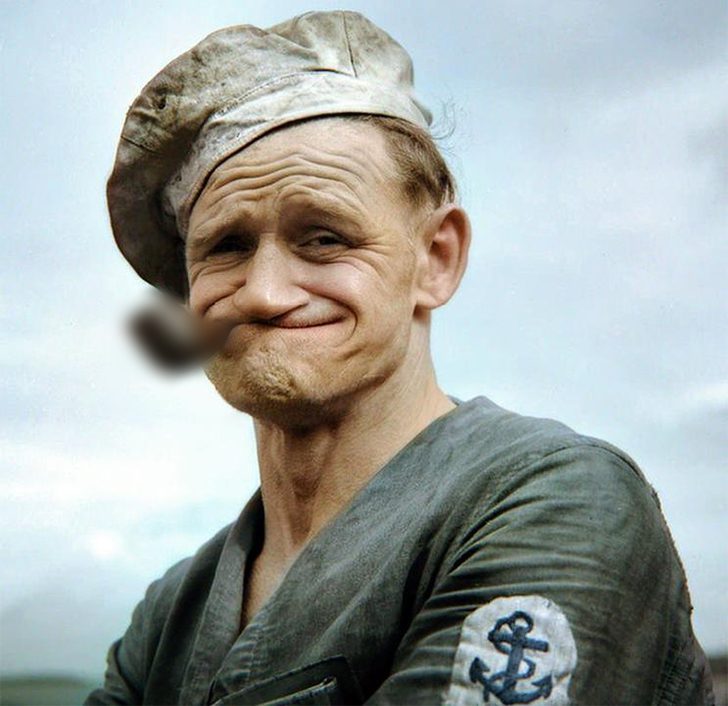
This memorabilia teases the imagination with a glimpse of a man believed to be the real-life inspiration for the beloved cartoon character Popeye. His unmistakable sailor's cap and the anchor tattoo emblazoned on his left forearm tie him closely to the spinach-loving sailor.
The most compelling feature, however, is his distinctly crooked face, sculpted by years of clenching a pipe in the corner of his mouth and squinting one eye—signature traits that define the cartoon Popeye's rugged, seafaring demeanor. While his true identity remains shrouded in mystery, the visual connection is unmistakable, highlighting how everyday characters spark iconic figures in pop culture.
The Goalkeeper and the Fog, 1937
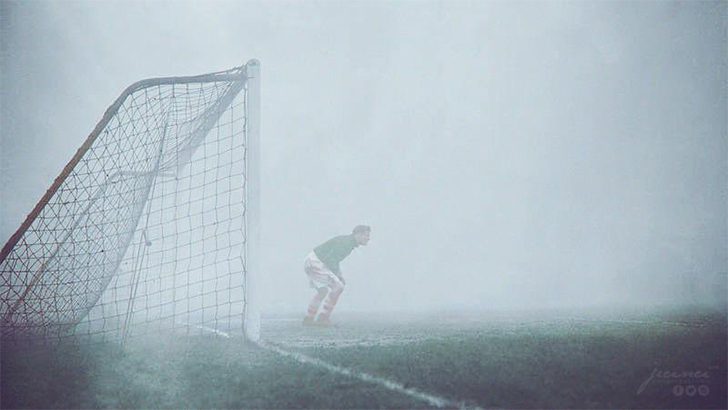
This picture, often misattributed to a foggy 1937 Chelsea FC match, actually features Arsenal goalkeeper Jack Kelsey poised in a dense fog, awaiting the ball. Despite the mix-up, the image has come to symbolize a humorous incident involving Charlton Athletic's goalkeeper, Sam Bartram.
A thick fog enveloped the pitch during the Chelsea match, leading to the game's cancellation. Unaware, Sam continued guarding his post until a police officer informed him of the situation 15 minutes later. His return to the locker room was met with laughter from his teammates, marking a legendary moment of isolation and confusion in sports history, vividly remembered through this iconic image.
John F. Kennedy & Jacqueline Bouvier, 1953
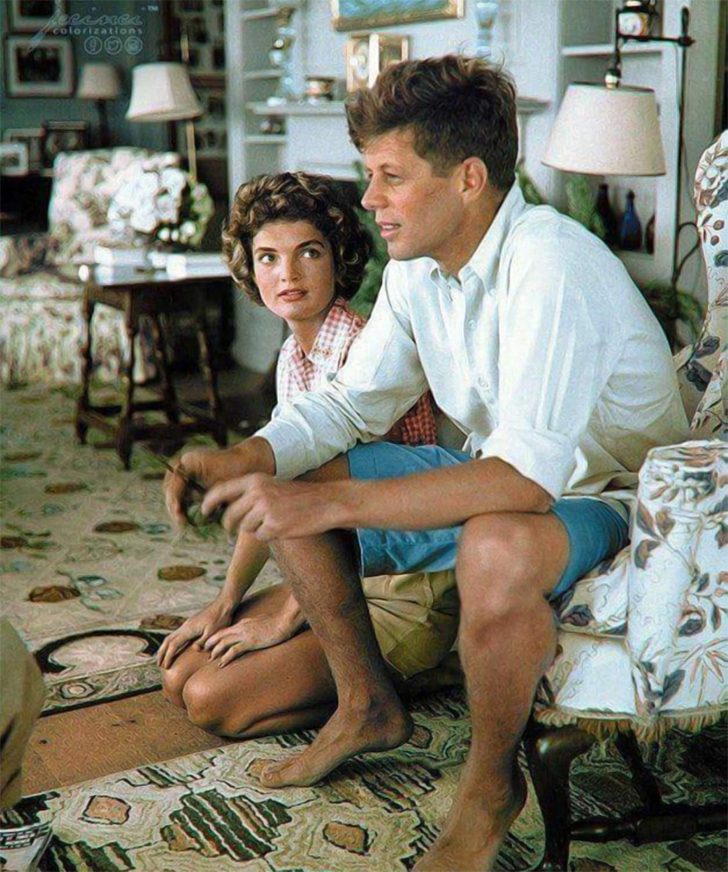
On July 4, 1953, amidst the fervor of Independence Day, John F. Kennedy and Jacqueline Bouvier celebrated their recent engagement, marking the beginning of one of America's most storied unions. The photo captures a joyful, youthful couple, ready to embark on a life leading them to the White House.
They married on September 12, 1953, in a lavish ceremony in Newport, Rhode Island, attended by society's elite and political heavyweights. Their relationship, characterized by highs and lows, remained under intense public scrutiny. Despite personal challenges, their partnership endured, embodying a blend of glamour, intellect, and resilience that captivated the nation and the world.
Night fishing in Hawaii, 1948
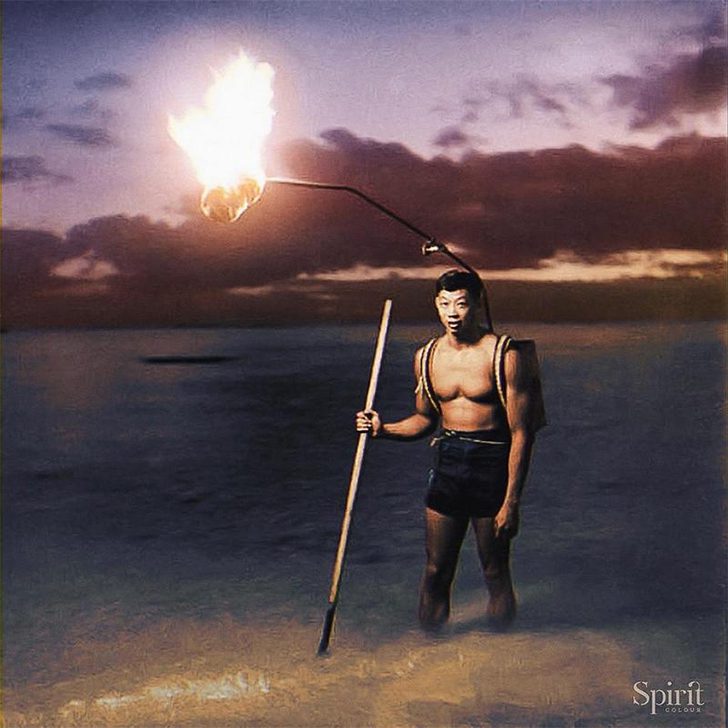
Here, we see a young Hawaiian fisherman wielding a large traditional spear illuminated by a torch on a dark night. In Hawaii, the art of spearfishing is steeped in cultural significance, blending skill with spiritual practices. The torch's flame did more than light the way; it lured fish, making them easier to catch.
Fishing was a respected craft, and fishermen were revered within their communities. They possess deep knowledge of coastal and reef ecosystems, which they believed held spiritual connections. This profound relationship is echoed in numerous Hawaiian prayers, proverbs, and tales, underscoring the cultural reverence for fishing—a skill that binds community, tradition, and nature together.
Major Dick Winters and his soldiers, 1945

Fans of the HBO miniseries "Band of Brothers" will appreciate this snapshot of Major Dick Winters and his troops from Easy Company during a rare moment of respite at the Berghof in Obersalzberg. This miniseries portrays the experiences of these U.S. paratroopers in World War II.
The Berghof, once Adolf Hitler's private retreat, became a symbol of the Allies' nearing victory when it was bombed just before the war's end. By 1945, American and French forces had taken Berchtesgaden as SS troops retreated. In a final turn of events, the Bavarian authorities demolished the Berghof in 1952, planting trees to heal the landscape and erase the scars of dictatorship.
Crow at the rodeo at the Crow Market in Montana, 1941
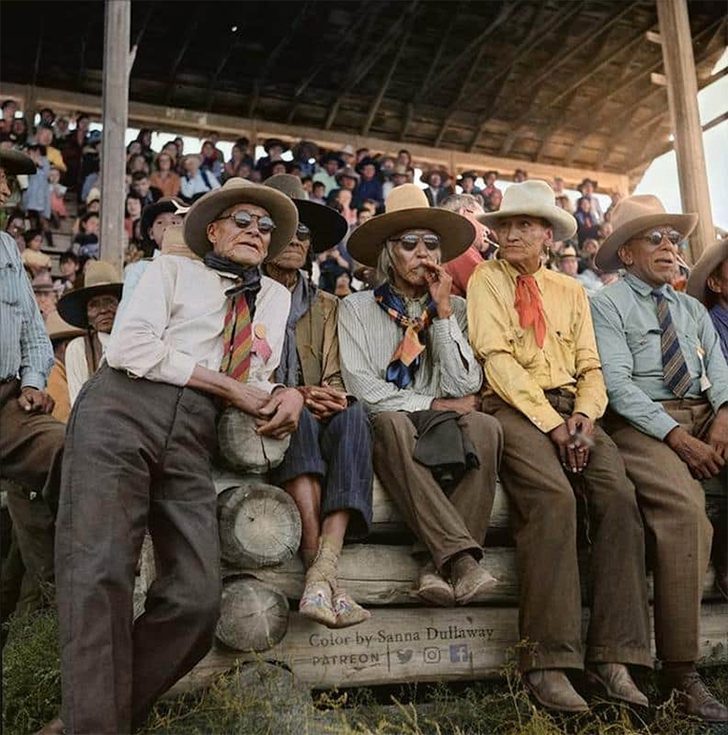
The Crow, known in their language as Apsáalooke or Absaroka, meaning "children of the long-beaked bird," is a vibrant part of America’s indigenous tapestry. With around 12,000 members today, the Crow Nation celebrates its rich heritage and communal bonds through the annual Crow Fair.
Initiated in 1904, this event takes place every third week of August near Billings, Montana. It serves as a cultural confluence, showcasing traditional Crow customs, rites, and a popular rodeo that draws wide participation from the community. This festival not only strengthens tribal unity but also preserves and educates others about enduring traditions and a vibrant way of life.
Thomas Edward Lawrence, 1910s
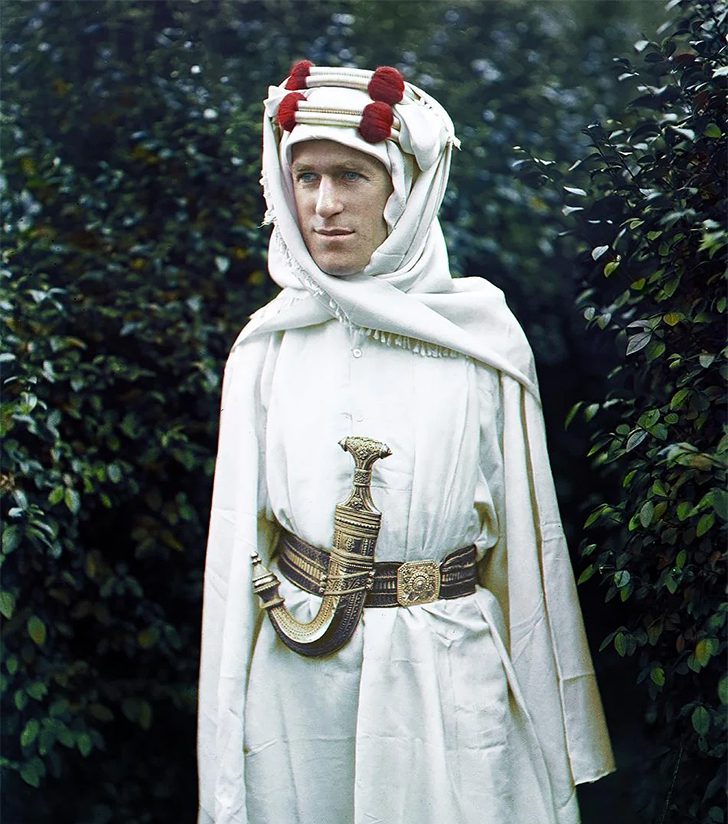
Thomas Edward Lawrence, more famously known as Lawrence of Arabia, emerges as a striking figure in a photo that captures his role in reshaping the Middle East. As a British officer, he played a pivotal role in supporting the Arab Revolt against Ottoman rule during World War I.
His adventures and strategic genius were later immortalized in his book "The Seven Pillars of Wisdom," a celebrated masterpiece in world literature. His story reached an even broader audience through the epic film "Lawrence of Arabia," which won multiple awards and brought his daring exploits and complex character to life on the silver screen.
Eunice Hancock, August 1942
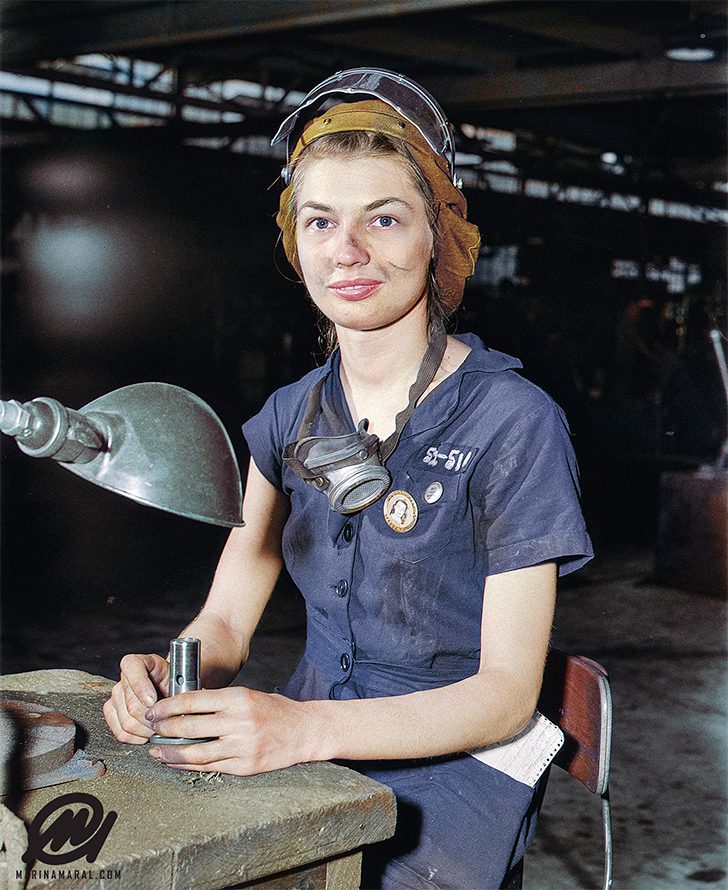
In the throes of World War II, a photo of Eunice Hancock masterfully operating a pneumatic sander at an aircraft factory epitomizes a monumental shift in American labor. During the war, approximately two million women, like Eunice, stepped into roles traditionally held by men, significantly altering the workforce landscape.
These women, popularly dubbed "Rosie the Riveters," produced the armaments and machinery crucial for the war effort. This period marked a significant evolution in societal roles, challenging traditional gender norms and laying foundational stones for future advances in women's rights. Their invaluable contributions not only supported the war effort but also sparked ongoing changes in workplace equality.
Henry Behrens Dancing With His Cat, 1956
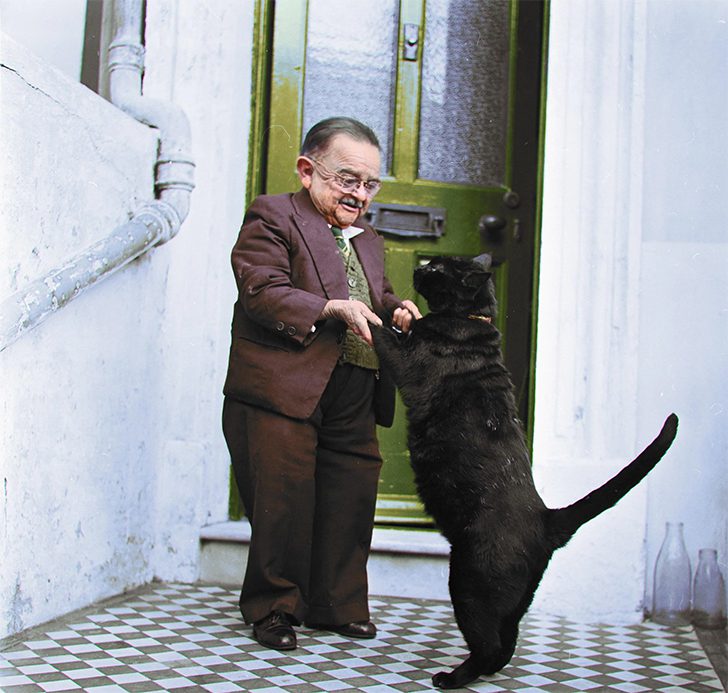
In a heartwarming 1956 photo, Henry Behrens, one of the smallest men ever recorded, stands just over 76 centimeters tall and weighs only 14.5 kilograms. He is sharing a joyful dance with his cat on the doorstep of his home in Worthing. Henry's diminutive stature doesn't hinder his zest for life; he finds his spotlight as a star performer with Burton Lester's Midget Circus, captivating audiences across the country.
This delightful image showcases his unique charm and his ability to turn everyday moments into spectacles of joy. His story is a living inspiration to embrace individuality and find happiness in performing, no matter the stage—or size.
Lyndon B. Johnson takes the oath of office on Air Force One, 1963
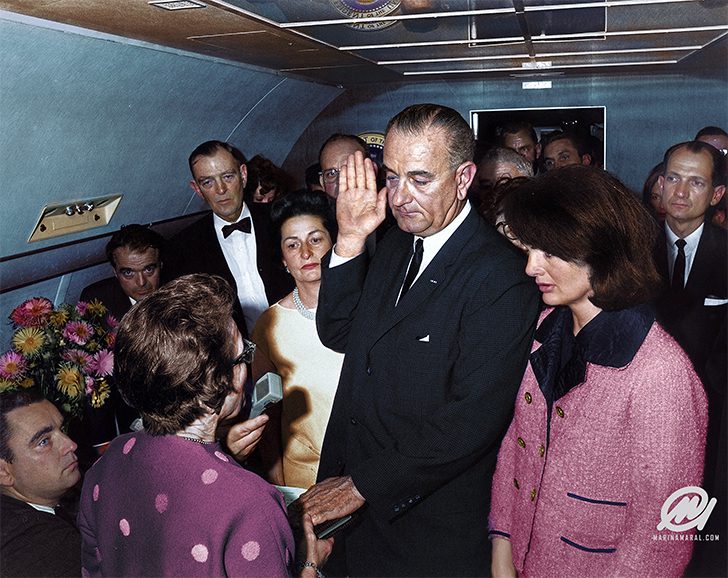
November 22, 1963, remains etched in American history as the day President John F. Kennedy was assassinated in Dallas, plunging the nation into shock. Mere hours after the tragedy, the focus shifted inside Air Force One, where an urgent ceremony occurred. Vice President Lyndon B. Johnson was swiftly sworn in as the 36th President by Judge Sarah T. Hughes.
In this photo, a somber Jackie Kennedy stands beside LBJ, with his wife, Lady Bird Johnson, looking on. As Air Force One took off for Washington D.C., it carried not just the new President but also a nation in mourning, poised for a journey from deep loss to new leadership.
Samurai, 1863
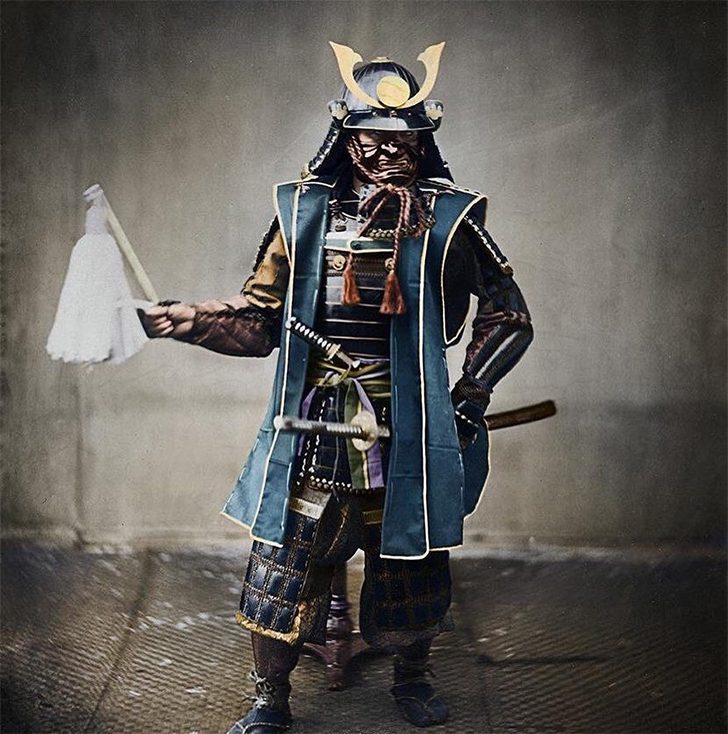
Felice Beato, a trailblazer of photojournalism, was one of the first to capture military conflicts and East Asian lifestyles through his lens. This image from 1863 showcases commander Koboto Santaro, adorned in traditional samurai armor, offering a vivid peek into a bygone era.
Living in Japan for over 20 years, Felice documented its rich culture and trained a generation of local photographers, enriching the photographic landscape. Through portraits, landscapes, and cityscapes, he brought the mystique of Asian life to curious audiences in Europe and North America during a time when Japan enforced stringent travel restrictions on Europeans under the Bakufu, its military government.
Sally Field, 1965
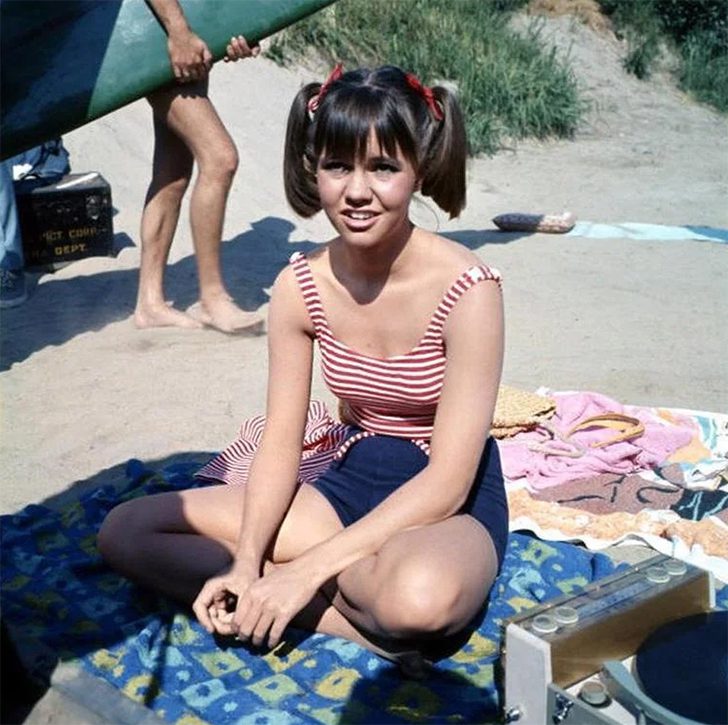
On the vibrant set of "Gidget" (1965-1966), a young Sally Field beams with the charisma that soon catapulted her into stardom. In this beloved series, she played Gidget, a spirited teenage girl whose adventures in surfing and heartfelt mishaps along the California coast charmed American audiences.
The name "Gidget" is a portmanteau of "girl" and "midget," coined affectionately by the character's surf buddies to describe her petite stature and bubbling personality. Since then, Sally's illustrious career soared further, earning her two Oscars and two Golden Globe Awards. This show kickstarted her career and also popularized surf culture on mainstream television.
The Liberation of Bergen-Belsen, 1945
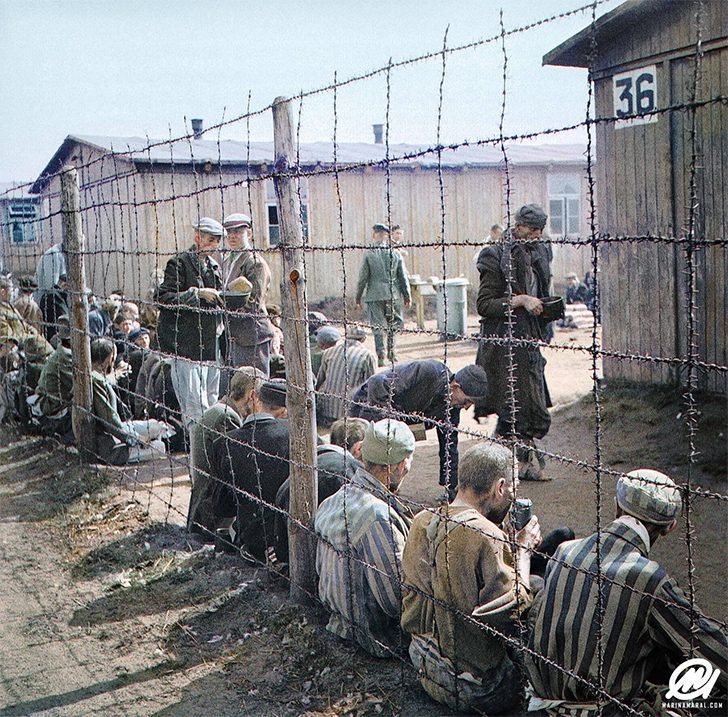
On April 15, 1945, a pivotal moment unfolded as British and Canadian forces liberated the Bergen-Belsen concentration camp, revealing the grim reality of 60,000 prisoners languishing in unthinkable conditions. The camp, notorious for its brutal environment, had become a death sentence for many, including the famed diarist Anne Frank and her sister Margot, who succumbed to typhus just weeks before liberation.
The liberating troops were met with scenes of despair and disease, prompting an immediate humanitarian effort. In the aftermath, a massive relief operation was launched, with survivors receiving medical care and the camp being burned down, marking a poignant end to a dark chapter in history.
Princess Elizabeth in the truck, 1945
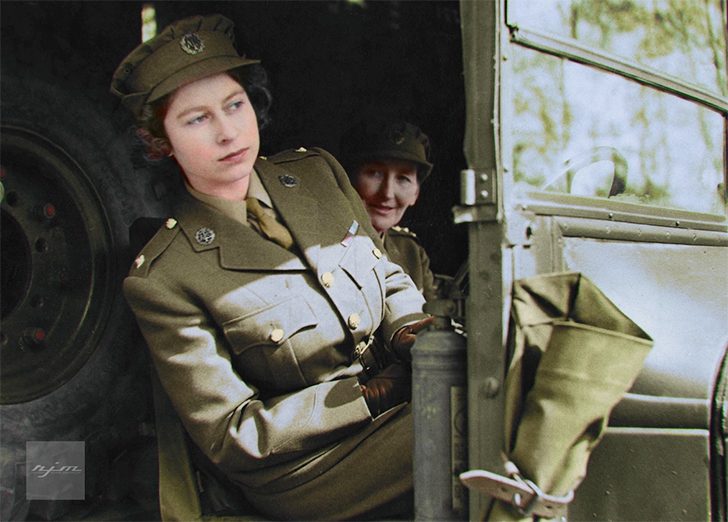
In 1945, a remarkable photo captured Princess Elizabeth, not adorned in royal regalia, but in the uniform of the Auxiliary Territorial Service during World War II. Under service number 230873, she trained as a truck driver and mechanic, embracing roles far removed from typical royal duties.
Her commitment to service saw her quickly rise to the rank of honorary junior commander in just five months. On Victory in Europe Day, May 8, 1945, she famously blended incognito among the jubilant crowds on the streets of London, celebrating the end of the war alongside her subjects. This period of service foreshadowed her lifelong commitment to her people.
Sophia Loren, 1960s
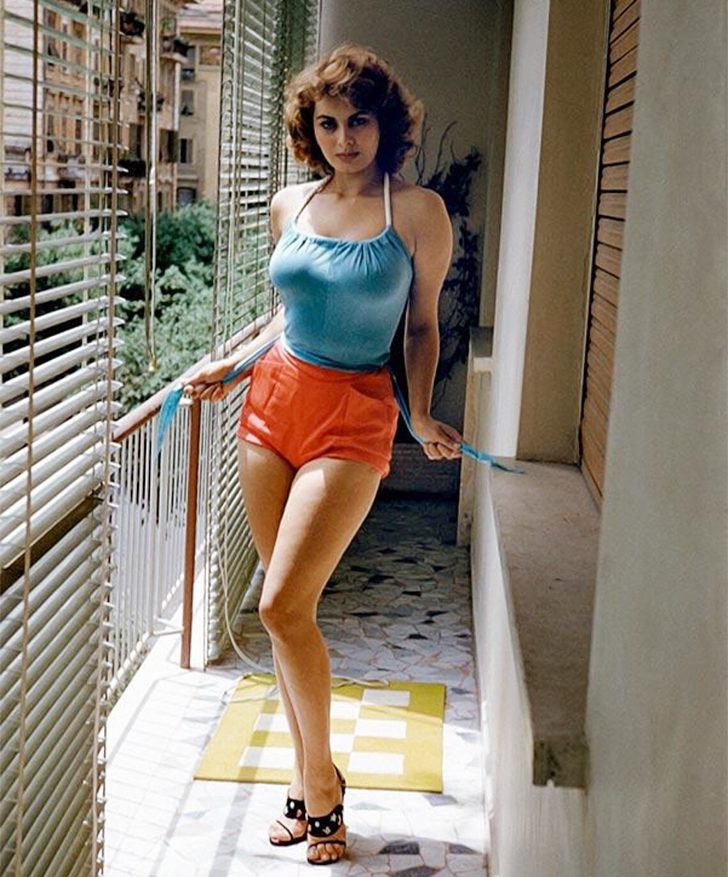
Sophia Loren dazzles in a striking blue top and orange shorts ensemble, her short, curly hair framing her iconic smile. Her journey to stardom began in post-war Italy, where her compelling performances quickly captured global attention. She made history with her role in "Two Women," becoming the first actor to win an Academy Award for a non-English performance.
Sophia's rise from modest beginnings to international fame is a testament to her enduring charisma and exceptional talent, making her a true legend of the silver screen. Her storied career includes unforgettable roles in "Marriage Italian Style" and "A Special Day," securing her place as a beloved figure in cinema worldwide.
War returnees in Vienna, Undisclosed
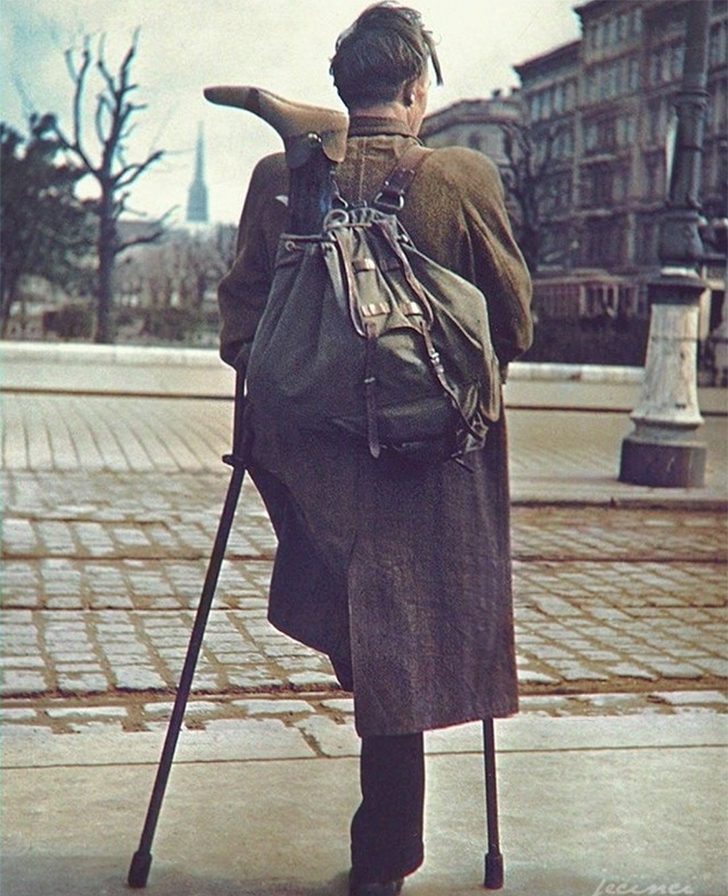
Ernst Haas, a Vienna-born visionary, captures a poignant moment in the life of a war returnee, bringing the raw emotions of post-war Vienna into vivid focus. Ernst later became a pioneer in color photography, skillfully using his lens to document the silent narratives of war returnees and invalids, with his work appearing in prominent magazines like "Life."
A founding member of Magnum Photos, his groundbreaking work in color was showcased in MoMA's first solo exhibition of color photography in 1962. His photographs were instrumental in helping the Red Cross identify and reunite war victims with their families, thereby weaving a tapestry of stories marked by resilience and reunion.
Young Winston Churchill, 1895
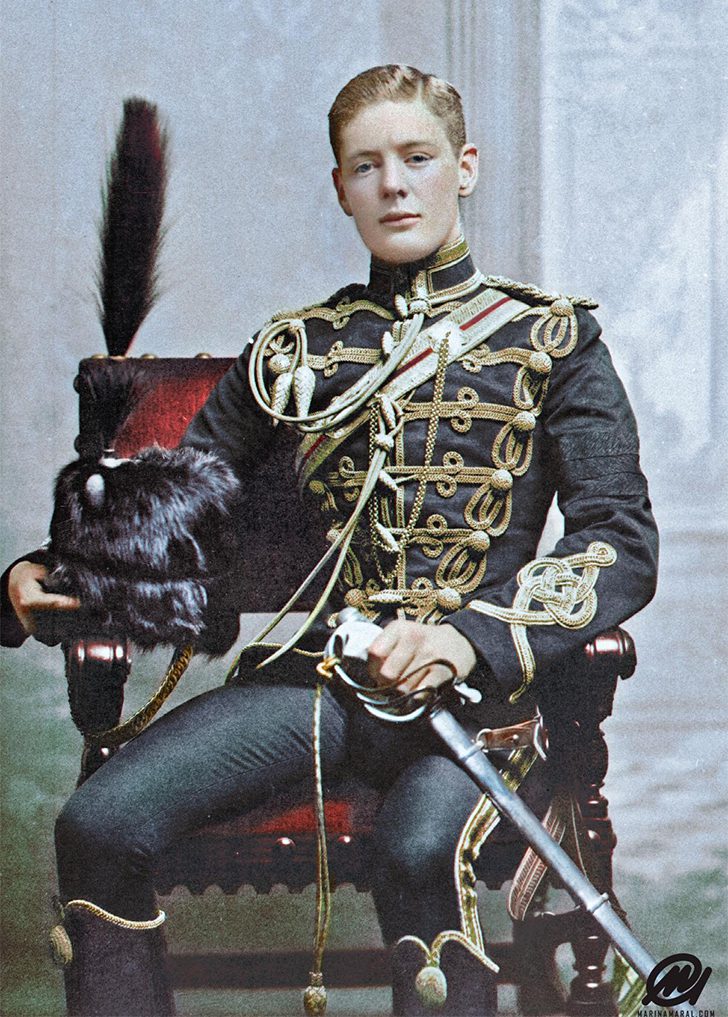
In 1895, a youthful Winston Churchill stood proudly in uniform, recently commissioned as a lieutenant in the 4th Queen's Own Hussars Regiment. This captured the beginnings of a remarkable journey. Before his tenure as Prime Minister, he was an accomplished war correspondent and author, penning works that included accounts of Sudan's and South African military campaigns.
His diverse experiences shaped his robust leadership and vision, which later culminated in his role as a staunch advocate for European unification and a pivotal figure in the mid-20th century. It foreshadows the resilience and versatility that would define one of the great politicians of the era.
Jungle Pam, 1970s
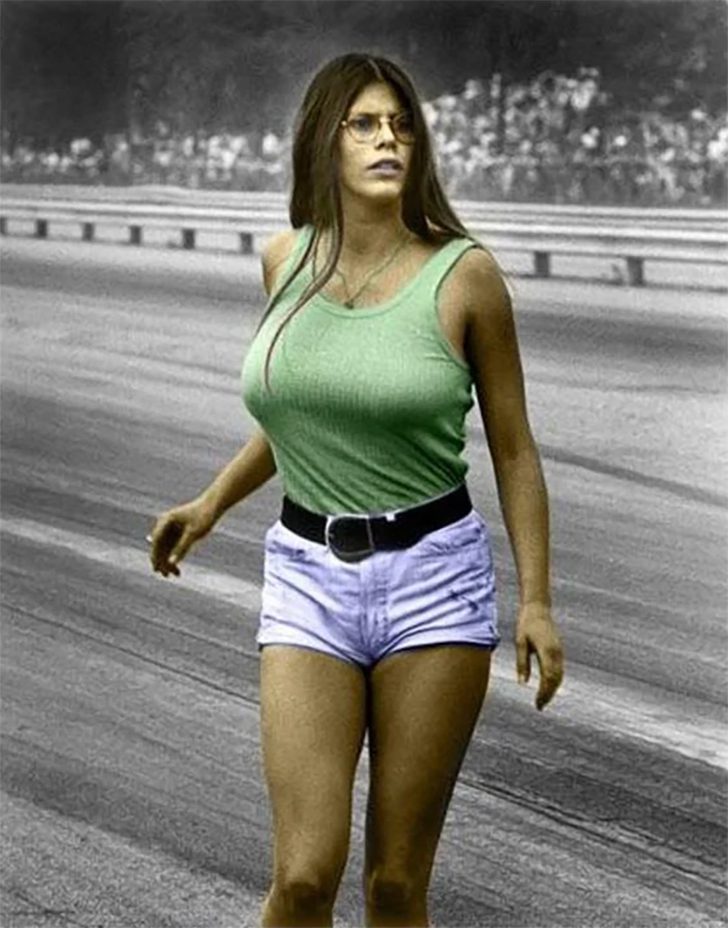
Capturing the electric atmosphere of the 1970s drag racing scene, the iconic photo of Jungle Pam—real name Pamela Hardy—epitomizes the era's raw energy and charismatic allure. Discovered by famed drag racer Jim Liberman as she strolled past his yellow Corvette in 1972, Pam quickly became both his partner and an integral part of his racing team.
Known for her distinctive style and spirited trackside presence, Jungle Pam helped draw massive crowds. Her flair for theatrics and fashion made her much more than a spectator; she was a showstopper in her own right, adding a splash of glamour to the grease-splattered world of drag racing.
Albert Einstein, Undisclosed
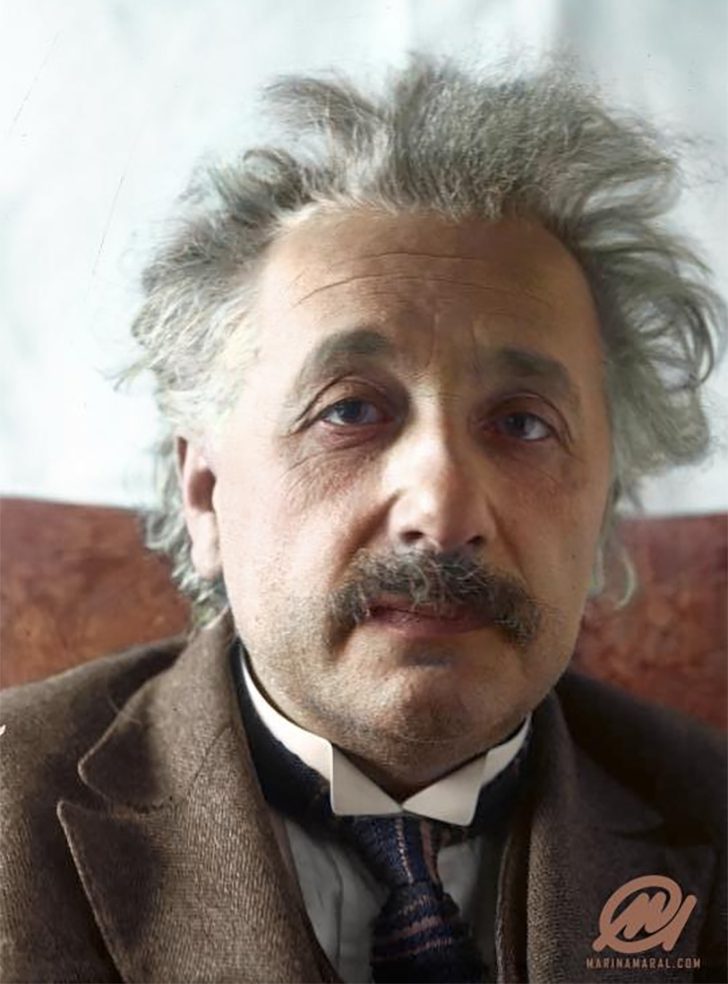
Albert Einstein exudes a profound calmness in this shot. Known as one of the greatest minds of the 20th century, he revolutionized physics, earning him the Nobel Prize in Physics in 1921. Beyond his scientific prowess, he had a playful side, often seen sticking out his tongue in photographs. He was also an accomplished violinist, finding solace and inspiration in music.
In his later years, the German-born theoretical physicist became an outspoken advocate for peace and civil rights, using his fame to promote social justice causes. Indeed, Albert's legacy extends far beyond his groundbreaking scientific discoveries, making him a timeless icon of intellect and humanity.
Great Depression, 1929

This snapshot takes us back to the 1930s, a turbulent decade marked by the infamous stock market crash of 1929. The photo features a man, donned in a period-appropriate suit and fedora, standing beside a charming old car adorned with a poignant sign: "$100 will buy this car. Must have cash. Lost all on the stock market," evoking the desperation many faced during the Great Depression.
The stock market crash of October 1929, often cited as Black Tuesday, triggered a nationwide economic disaster. This photo vividly reminds us of the era's harsh realities and the resilience it demanded from people.
Salvador Dalí on board the SS Normandy, 1936

In 1936, Salvador Dalí made a striking appearance on the deck of the SS Normandie as it docked in New York City, marking one of his influential visits that stirred the American art scene. Known for his flamboyant personality and meticulously styled mustache, he was a central figure in Surrealism, captivating audiences with his dream-like, bizarre imagery.
His most famous piece, "The Persistence of Memory," with its melting clocks, exemplifies his surrealistic exploration of time and memory. Salvador's trips to New York significantly shaped his work, infusing it with the city's dynamism and complexity, further cementing his status as a pioneer of the Surrealist movement.
Operation Overlord, 1944
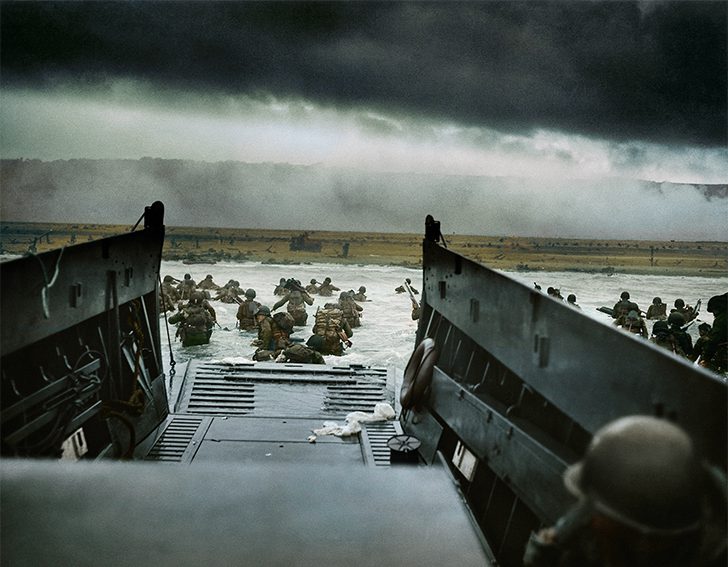
On June 6, 1944, a defining moment of World War II was immortalized by US Army photographer Robert F. Sargent in the gripping photo called "Taxis to Hell—and Back—Into the Jaws of Death." The photo captured soldiers from the 1st US Infantry Division disembarking from a landing craft and storming the sands of Omaha Beach.
The photo is a stark portrayal of Operation Overlord, the largest seaborne invasion in history, marking the beginning of the end of Nazi domination in Europe. This momentous day has been etched into popular culture, notably inspiring the harrowing opening scene of "Saving Private Ryan."
Charlie Chaplin, 1916
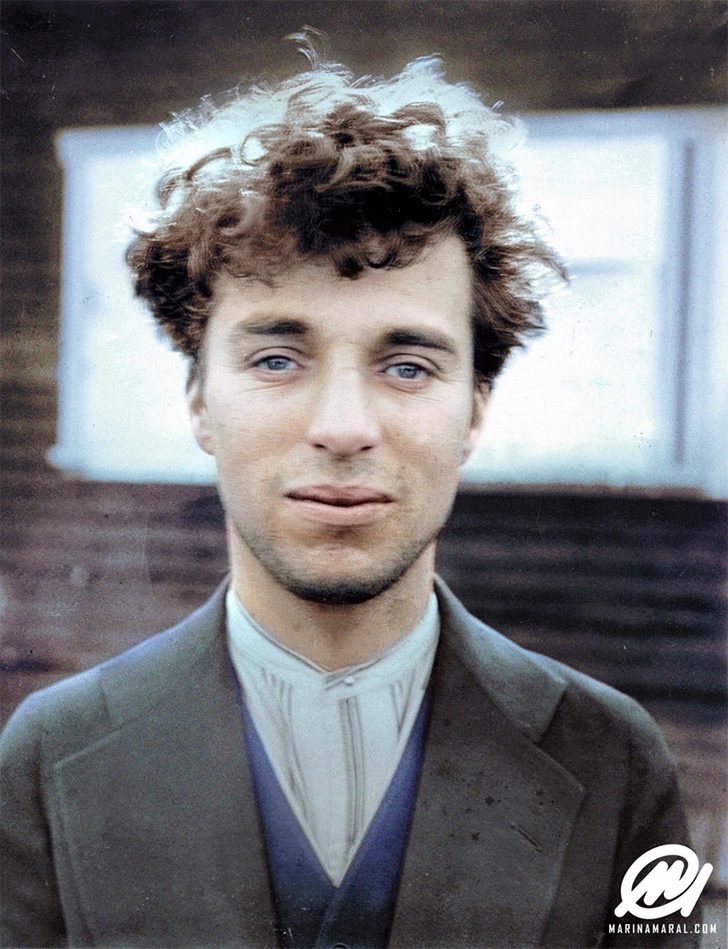
A 1916 photo captures Charlie Chaplin in his iconic Tramp costume, a character that catapulted him to international fame and became a symbol of silent film comedy. His genius lay in his ability to blend slapstick with poignant commentary on society's underdogs. By 1916, he had already created unforgettable films like "The Tramp" and "Modern Times," which not only showcased his talents as an actor and director but also his knack for poignant storytelling.
Charlie's innovative spirit extended to founding United Artists in 1919, giving him, and eventually other filmmakers, unprecedented control over their works. Known for his bowler hat, mustache, and cane, he remains an enduring historical figure.
The Seaforth Highlanders in the First World War, Undisclosed
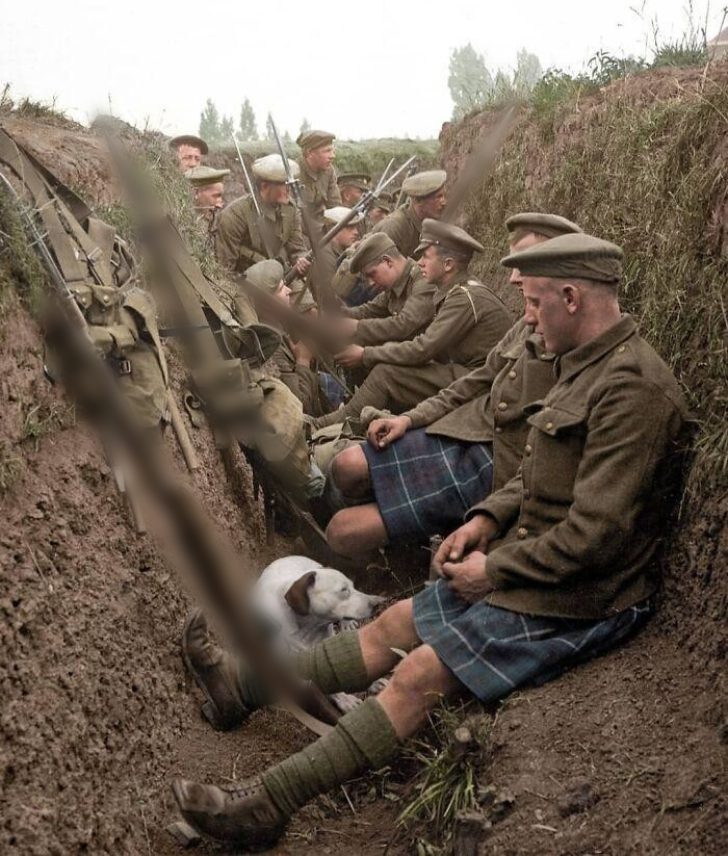
This memorable photo captures the Seaforth Highlanders, a regiment from the Scottish Highlands, distinguished in their traditional Mackenzie clan kilts and caps emblazoned with "Cuidich'n Righ" ("Help the King.") Established in 1881 and based around Inverness, the Highlanders' unique uniforms brought a touch of Scottish heritage to the brutal trench warfare of World War I.
Originally stationed in India at the war's outbreak, the regiment was swiftly transferred to France, where they valiantly fought in the 1914 Battle of Givenchy. Their striking attire not only symbolized their roots but also their steadfast courage in the face of relentless adversity on the Western Front.
Thomas Cave Inked With His Social Security Number, 1939
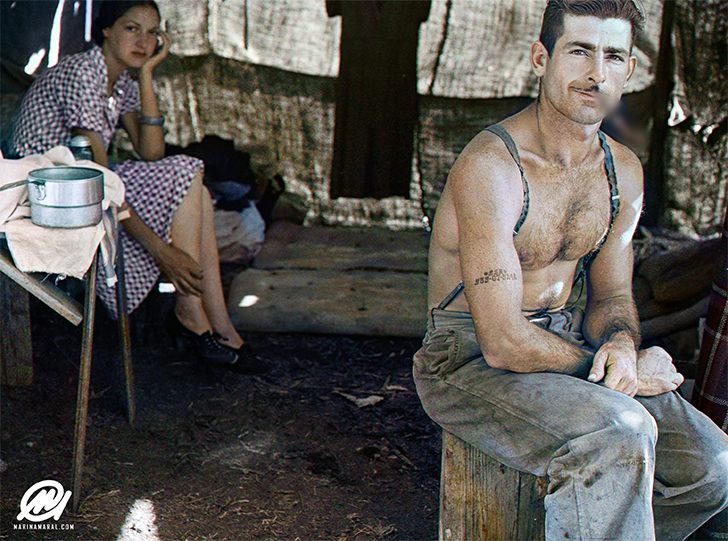
In a photograph captured by Dorothea Lange, Thomas Cave displays a unique symbol of resilience: his social security number tattooed on his upper right arm. The image, taken in 1939 during the height of the Great Depression, features Thomas alongside his wife, Annie, both emblematic of the era's widespread hardship.
The tattoo served as a practical reminder of his identity in a system where such a number meant access to crucial financial assistance from the government. Dorothea Lange, a pioneer of documentary photography, masterfully encapsulated the struggles and stories of ordinary Americans like the Caves, bringing a face and form to the abstract pains of poverty and recovery.
Mata Hari, Undisclosed
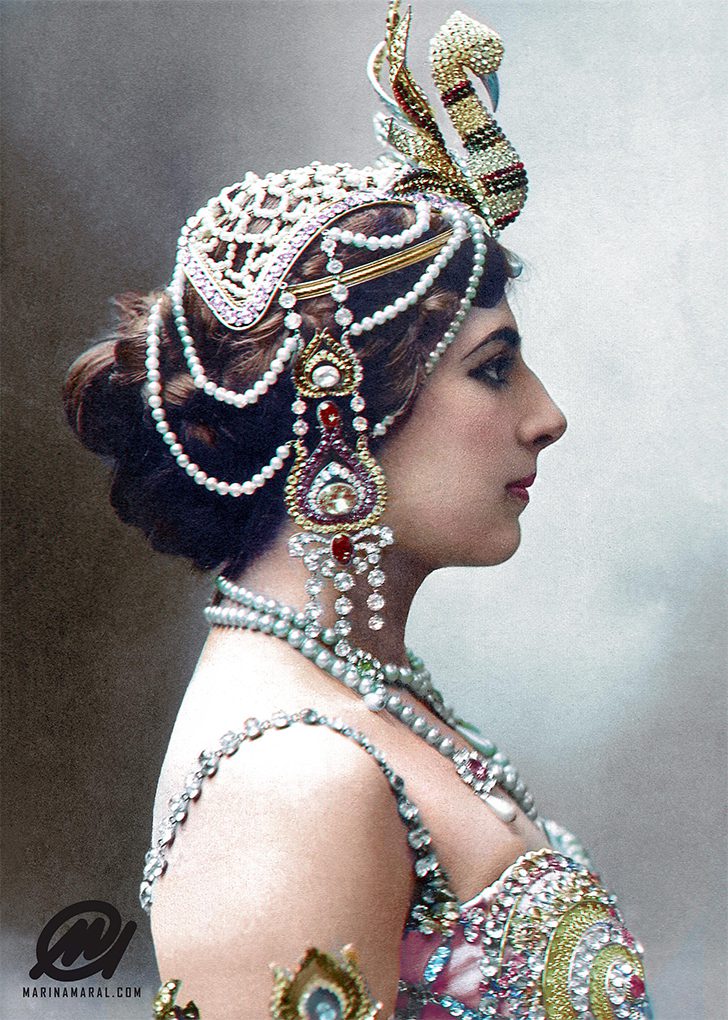
Mata Hari, the famed Dutch exotic dancer turned spy, remains one of history's most mysterious figures. Born Margaretha Geertruida Zelle, she captivated audiences with her sensual performances before becoming a spy for Germany under the code name H 21 during World War I.
In 1917, her double life unraveled when French authorities arrested her on charges of espionage. Mata Hari faced a swift trial and was executed by firing squad on October 15, 1917. Legends of her final moments abound, including tales of her blowing kisses to her executioners, adding a layer of mystique to her dramatic life and death.
Portrait shot in Warsaw, November 1946
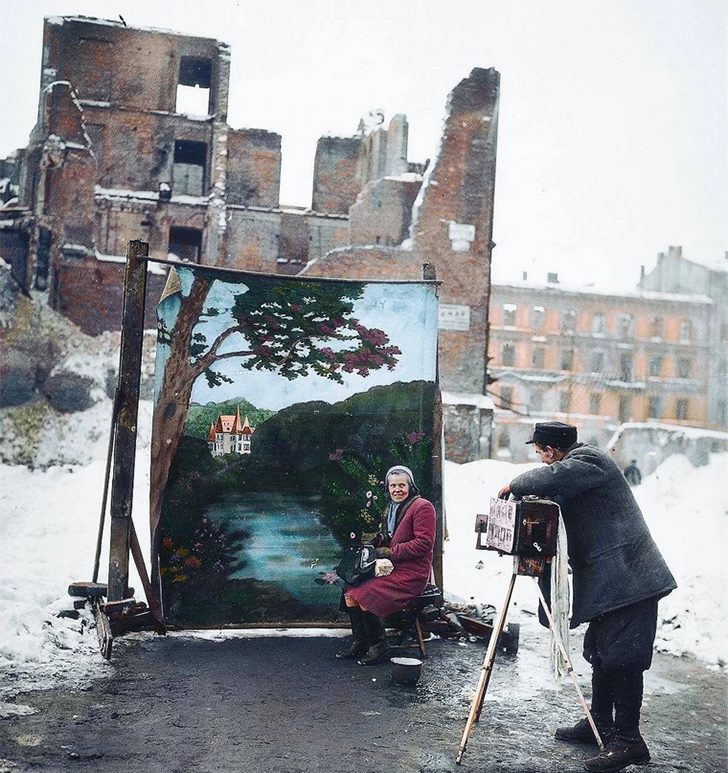
At the end of World War II, Warsaw was a city in shambles, its landscape marred by the brutal German occupation. Despite the devastation, the resilient spirit of its citizens shone through as they endeavored to reclaim normalcy in 1946, just a year after the conflict ended.
Amidst the backdrop of bombed-out buildings, Warsaw's inhabitants found creative ways to preserve moments of restored peace; portrait photography found a new setting. Photographers ingeniously set up makeshift studios amidst the ruins. This image of a customer posed before a carefully arranged backdrop in front of wartime rubble captures the indomitable human spirit, illustrating how necessity becomes the mother of invention.
Leo Tolstoy, 1908
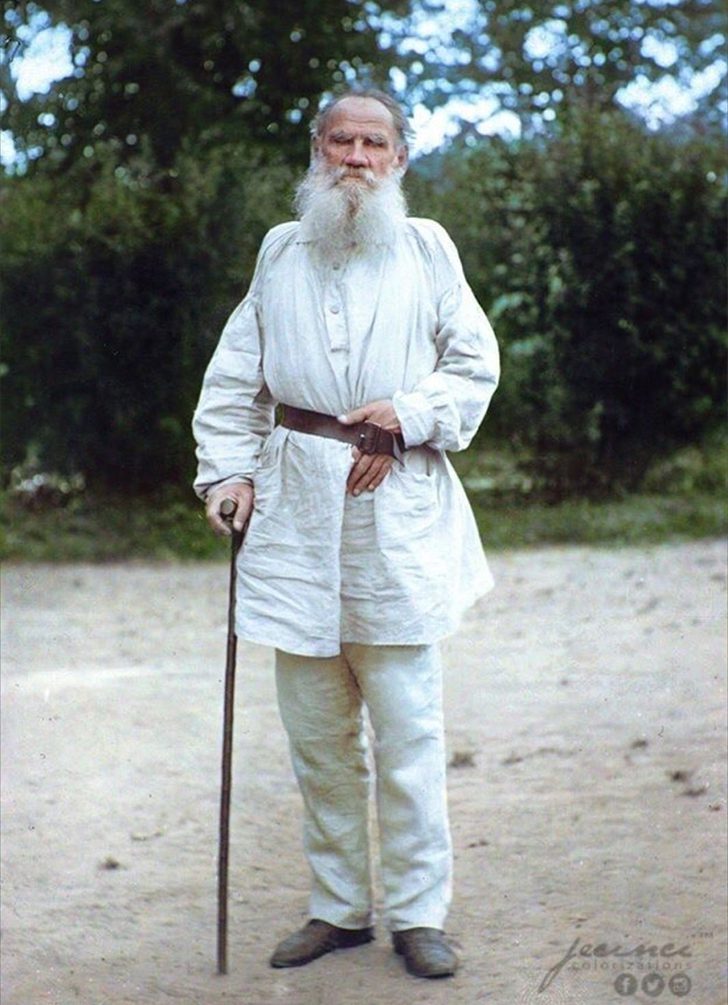
Russian author Leo Tolstoy left an indelible mark on world literature with timeless classics like "War and Peace" and "Anna Karenina." While his literary brilliance earned him Nobel Prize nominations for Literature from 1902 to 1906 and for Peace in 1901, 1902, and 1909, he never clinched the coveted award.
Beyond his literary genius, Leo delved into the realm of peaceful resistance, influencing luminaries like Martin Luther King Jr. and Mahatma Gandhi. His philosophical treatise, "The Kingdom of Heaven Within You," resonated profoundly, shaping the ideologies of nonviolent protest in the 20th century. Captured two years before his passing, his contemplative gaze hints at the depth of his wisdom.
Dutch resistance fighters in the streets of Breda, 1944
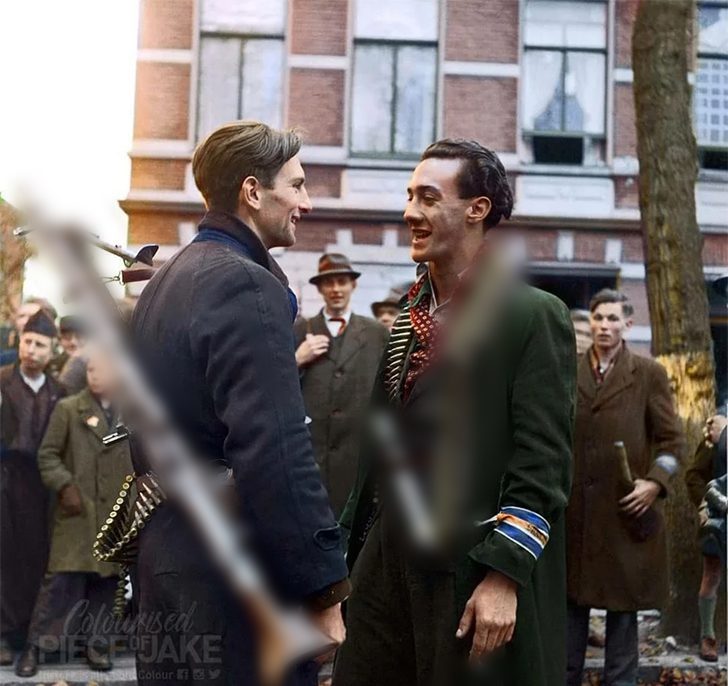
At the onset of World War II, Germany's swift and brutal 'blitzkrieg' tactics left much of Europe in shock and under occupation. In response, resistance movements sprang up across the continent, employing guerrilla tactics to challenge the Nazi regime.
Among the earliest was the Dutch "Geuzen," formed on May 15, 1940, the very day the Netherlands surrendered. This group was a diverse coalition, including monarchists loyal to the exiled government and leftists united in their fight for freedom. By 1944, the southern Netherlands was liberated, though it took another eight months for the northern regions to regain control, highlighting the persistent and courageous efforts of the resistance.
Oscar Wilde, 1882
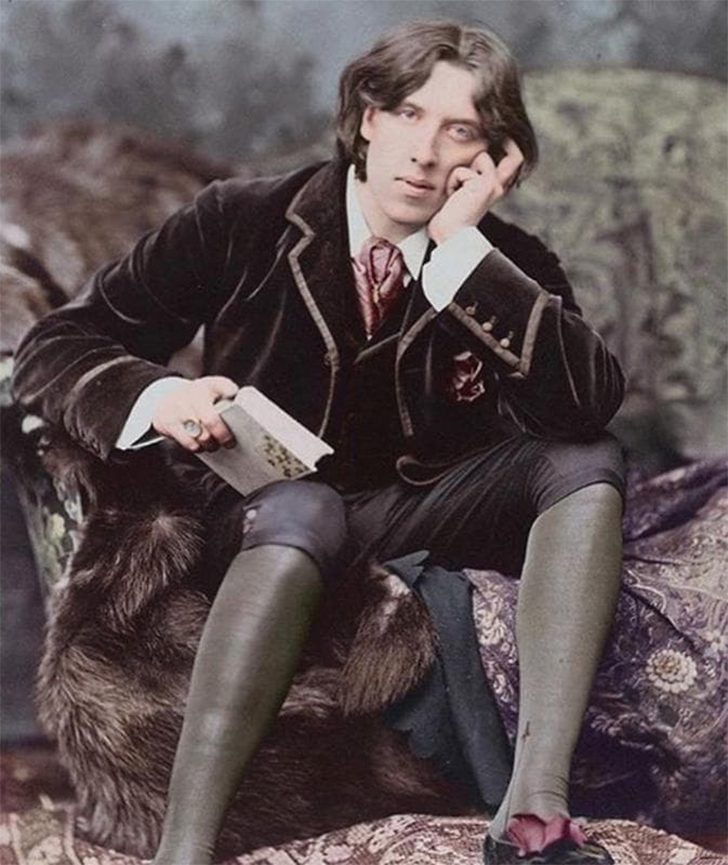
This 1882 photo captures Oscar Wilde at the height of his fame, dressed in his characteristic flamboyant style that challenged the conservative norms of Victorian England. Known for his sharp wit and scandalous persona, he was both celebrated and vilified as one of the most controversial figures of his time.
His lectures across the United States and Canada on aestheticism and the arts left a lasting impact. However, his later conviction for gross indecency led to two years of hard labor, devastating his health and fortune. Released in 1897, a destitute Oscar spent his final years in Paris, where he passed away in 1900.
King Ferdinand and Queen Marie on a state visit, 1924
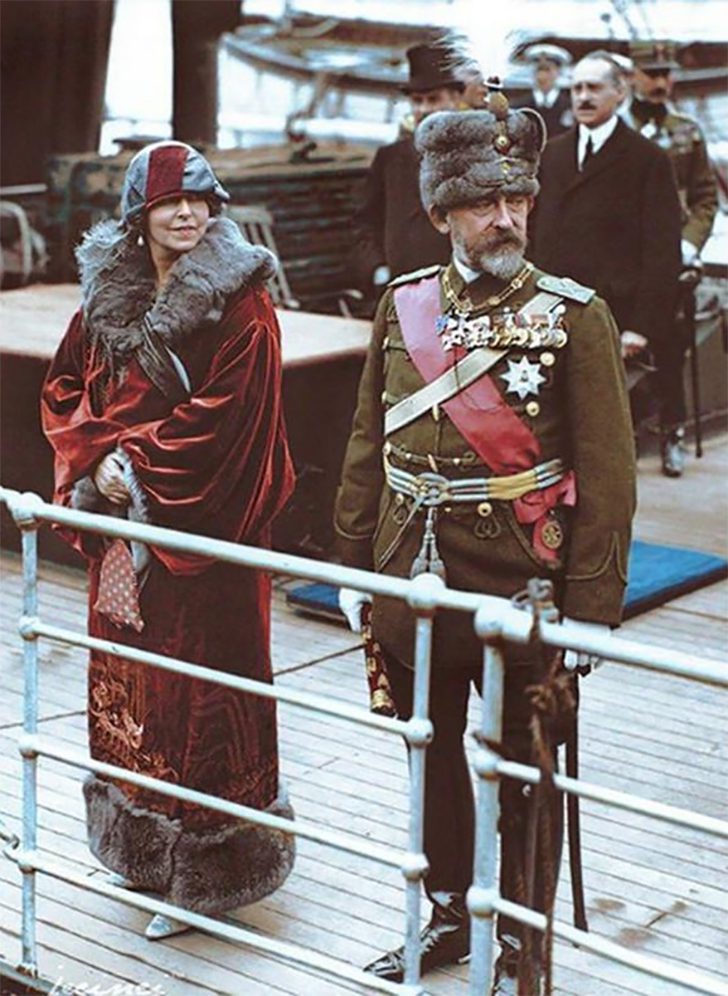
The woman on the left in this historic photograph is Princess Marie Alexandra Victoria of Edinburgh, affectionately known as Missy. A granddaughter of both the British king and the Russian tsar, Missy was a sought-after match in royal circles. Initially, she was expected to marry her cousin, who would later reign as George V of Britain.
However, fate had other plans, and on January 10, 1893, she married Ferdinand of Romania instead. Despite her personal correspondence, her public demeanor was flawless. Captured here during a state visit to Dover in May 1924, the future Queen of Romania exemplifies royal decorum, masking her private matters with a public smile.
Martin Luther King at the Chancery, Undisclosed
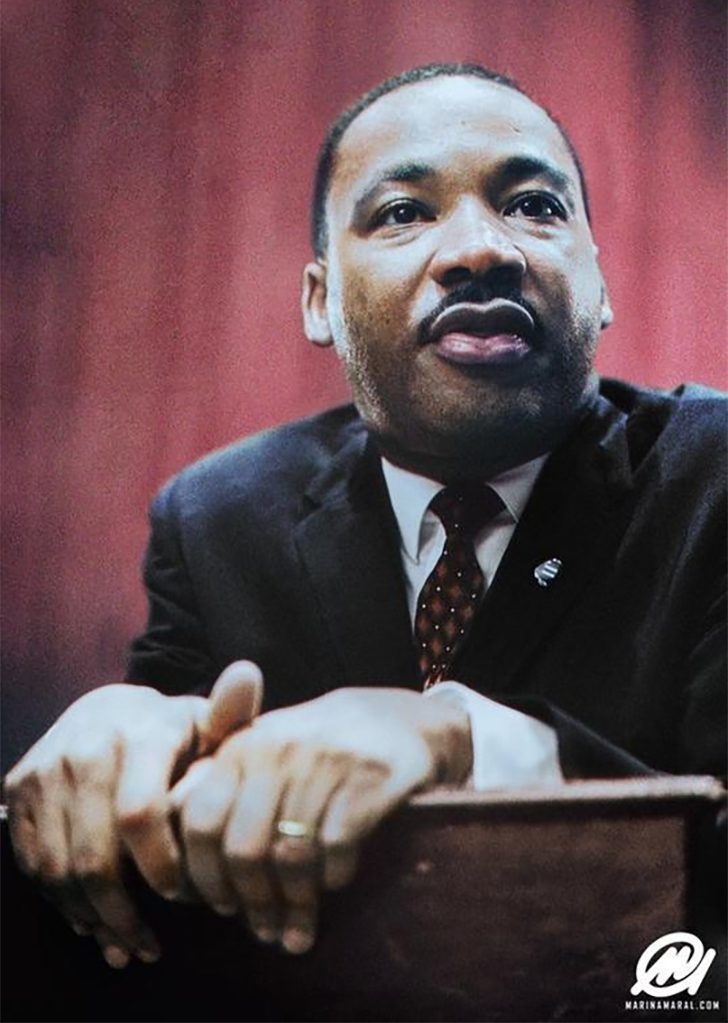
In a thoughtful pose at the chancery, Martin Luther King Jr. is the soul of the Civil Rights Movement. A steadfast advocate for racial equality, his leadership during affairs like the Montgomery Bus Boycott and the March on Washington, where he delivered his iconic "I Have a Dream" speech, galvanized a nation.
Tragically, his relentless pursuit of justice was cut short when he was assassinated in 1968. Martin's legacy, however, lives on. He was posthumously bestowed with a Presidential Medal of Freedom and a Congressional Gold Medal. His strategic nonviolence inspired countless others globally, ensuring his teachings and spirit continue to fight for equality and justice.
Rosa Parks & Martin Luther King, Montgomery, 1955
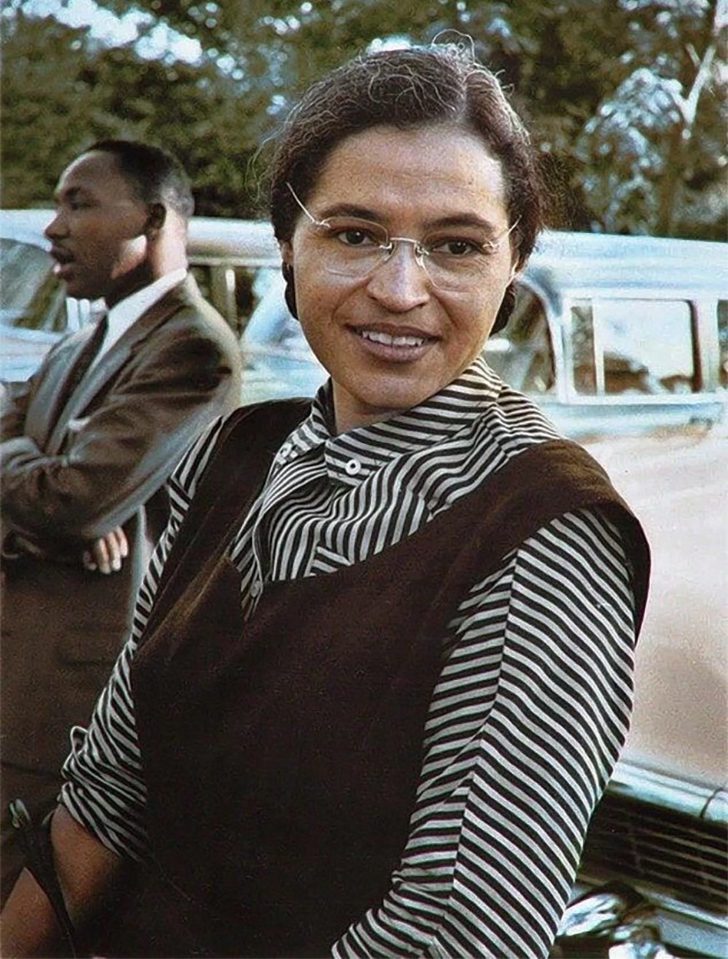
Rosa Parks and Martin Luther King Jr. are beacons of the American civil rights movement. In 1955, Rosa's refusal to surrender her bus seat to a white passenger sparked the historic "Montgomery Bus Boycott," a vital moment in the fight against segregation.
Despite the risks, Rosa, then a secretary, stood firm, igniting a movement for equality. Martin was inspired by her courage and rallied the community, leading to the desegregation of public transportation. Beyond their roles as activists, both icons were deeply committed to justice, leaving an indelible mark on history through their unwavering determination and resilience to social causes.
